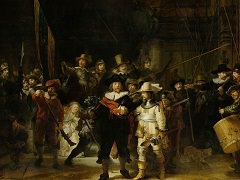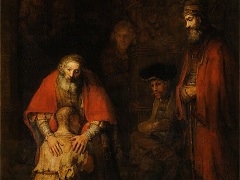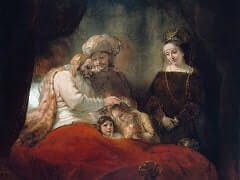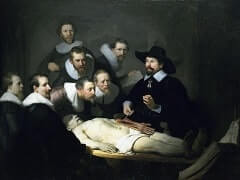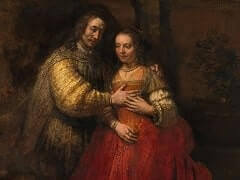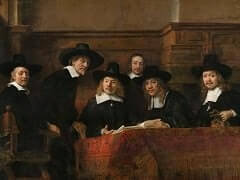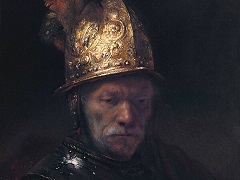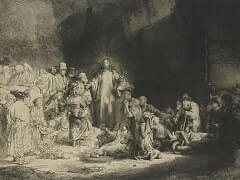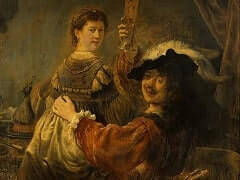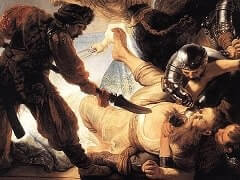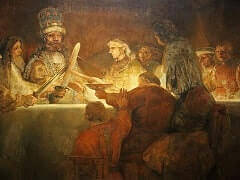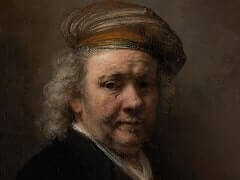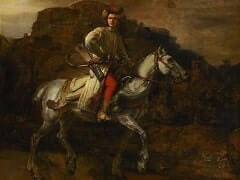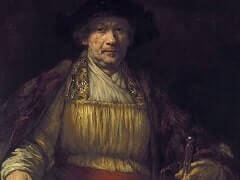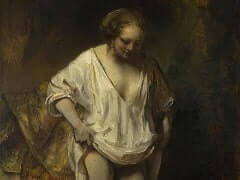The Raising of Lazarus by Rembrandt

Rembrandt painted The Raising of Lazarus early in his career, while he was still in Leiden, and not long after his apprenticeship under Pieter Lastman, whose influence is clear. Rembrandt
made two etchings on the same subject but with differing compositions.
The painting shows the moment Lazarus re-awakens from death and rises from his tomb as Christ calls him. Lazarus is in the darker half of the painting while the figures at left are far more
illuminated than he. Mary and those assembled look on in amazement as Lazarus comes to life. The painting depicts a parable of spiritual life, the miracle of the hardened sinner receiving first
grace (sorrow for sins committed in order to seek penitence and redemption). Rembrandt used chiaroscuro (contrasts of light and dark) in this painting, with the dark interior of the burial cave
and the limited torchlight focusing the attention of the viewer and giving the figures impact.


